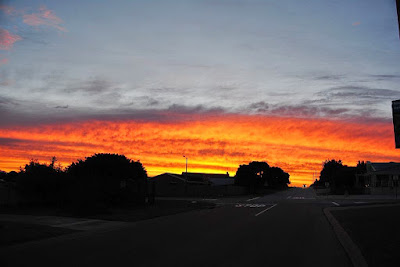The official portrait of the International Space Station's Expedition 72 crew. At the top (from left) are, Roscosmos cosmonaut and Flight Engineer Alexey Ovchinin, NASA astronaut and space station Commander Suni Williams, and NASA astronaut and Flight Engineer Butch Wilmore. In the middle row are, Roscosmos cosmonaut and Flight Engineer Ivan Vagner and NASA astronaut and Flight Engineer Don Pettit. In the bottom row are, Roscosmos cosmonaut and Flight Engineer Aleksandr Gorbunov and NASA astronaut and Flight Engineer Nick Hague. Credit: NASA/Bill Stafford and Robert Markowitz
As I write this article the SSTV Experiment is currently underway. The Theme this time around is: "Celebrating ARISS 2024".
You have from the 25 December 2024 to 5 January 2025 to catch all 12 images. I am pleased to announce that there are a lot of interest and participation in the SSTV Experiment in South Africa. For those interested you still have 6 days left to download SSTV images from the ISS.
What will the Experiment entail?
"The SSTV transmissions will be made using the amateur radio station in the ISS Service Module. The transmission frequency will be 145.800 MHz (+/- 3.5 kHz Doppler shift) FM, using SSTV mode PD120.
Many FM rigs can be switched to wide and narrow deviation FM filters. For best results you should select the filter for wider deviation FM. Handhelds generally have a single wide filter fitted as standard.
The ISS call-sign will be RS0ISS.
Reports are requested: please send ARISS uploading your decoded pictures in the official ARISS SSTV gallery: https://www.spaceflightsoftware.com/ARISS_SSTV/
Useful information to receive the pictures can be found here: https://amsat-uk.org/beginners/iss-sstv/
Follow ARISS on X for official updates during the event https://x.com/ARISS_Intl
Why download SSTV images from the ISS?
Every radio amateur that participate set his/her own goals and has a reason for participating in the experiment. Unfortunately I do not have all the information on hand why some radio amateurs download images. In this article I will look into a few reasons.
Herewith some images (Click on images to enlarge) of the radio amateurs that are currently participating in the ARISS SSTV Experiment:
ZAYN ZR3VO, Orania, South Africa
In the previous SSTV Experiment the editor used a 2 Element Yagi Antenna to download images. This little antenna performed well and Zayn ZR3VO decided to construct this antenna for use during the Series 23 event. Herewith a few images received of the construction of the antenna as well as some images.
Here is a few images downloaded by Zayn using different antennas. I can see and improvement in the quality of images as the experiment progresses.
Note: No satellite antennas,satellite ham radios, rotators or tracking software used. Only a handheld and a "handheld" antenna plus cellphone.
Rulhof ZS4RM, Ballito KZN, South Africa
Rulhof ZS4RM a young radio amateur from Bloemfontein is currently on holiday in KZN. He decided to use his AMSAT SA Antenna to receive images from the ISS. He removed all the 70 cm elements from the antenna, just using the two elements for 2 meters. He was quite disappointed with the quality of the images that he received. He decided to remove the reflector and just use the driven element. Well it worked and it worked well. Now this is not to say that the AMSAT SA Antenna is not working. I personally think that using the antenna with all the elements makes the antenna very directional and you need to be spot-on to track the ISS and download the images at the same time. With this antenna now being a "dipole" it provides a margin for tracking errors apart from removing the directionality which makes it easier to use for this type of operations. If you have a AMSAT SA Antenna this options is now available with all the other options this antenna provides.
Herewith an image received of the "modified" antenna as well as some downloaded SSTV images.
Jakobus ZS1JDJ, Da Nova, Mossel Bay South Africa
Jakobus is one of the new radio amateurs in the Southern Cape. He decided to use his dipole antenna mounted on the roof. Well done Jakobus not a bad image for the first time trying. Please keep on downloading images.
Gerrit ZS1KLO, Reebok, Mossel Bay South AfricaGerrit participated in the previous experiment and downloaded several good quality images with his homebrew satellite antenna. He provided the following images of the current experiment.
Thys ZS1TBP, Heiderand, Mossel Bay South Africa
Thys participated in several experiments in the past when he was at home and not driving a 18 wheeler. He is a Trucker and it is not always possible to participate in these events. This time around he provided some images.
Johan ZS1I, Heiderand, Mossel Bay South Africa
I used this ARISS SSTV Event to experiment with with a homebrew 2 element Quad Antenna, Robot36 Software, Orbitron and a Baofeng UV82 HT. The wire 2m Quad Antenna looks quite promising as the image below was my first image downloaded from the ISS during this series. Further testing will have to done before I can come rate the antenna against the homebrew copper pipe 2 element Quad Antenna, Nagoya NA-771 Whip Antenna, homebrew 1/4 Wave Ground Plane Antenna and homebrew 2 element Yagi Antenna. The antenna shootout continues.
Now the following image was downloaded with a line of trees in the way. It was a very low pass and I was quite amazed that the 2m Wire Quad Antenna and Baofeng UV82 HT received signal with the trees in the way of the pass.
Christi ZS4CGR, Luckhoff, FS, South Africa
The following two images comes from Christi ZS4CGR. He advised that he receives far better quality images with the Quansheng UV-K6 HT than the Baofeng UV5R HT. Judging from the images it is clear that they are excellent images. Well done Christi!
Well there is still time to download and play around with SSTV coming from the ISS.
Enjoy!!





























































